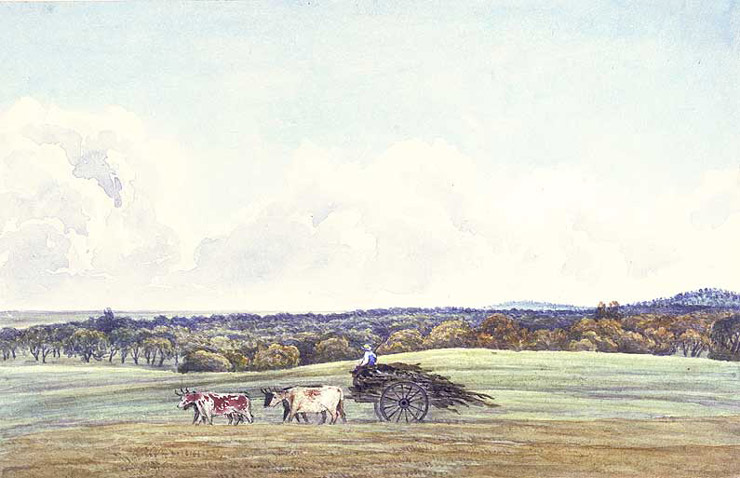 'Panorama of Challicum, No. III', c1850
'Panorama of Challicum, No. III', c1850
TLF ID R3257
This is a watercolour measuring 16 cm x 24.5 cm showing the Victorian squatting run Challicum, from a south-westerly viewpoint. A team of four bullocks, pulling a single-axle wagon loaded with fuel and rough bush timber, is centred in front of a large forest. Two unidentified mountains or hills are on the horizon. The artist, Duncan Cooper, included this painting as the eleventh watercolour in his field sketchbook and inscribed the title 'Panorama of Challicum, No. III' on its mount. The watercolour is the third of nine panoramas which together form a cyclorama of the Challicum area.
